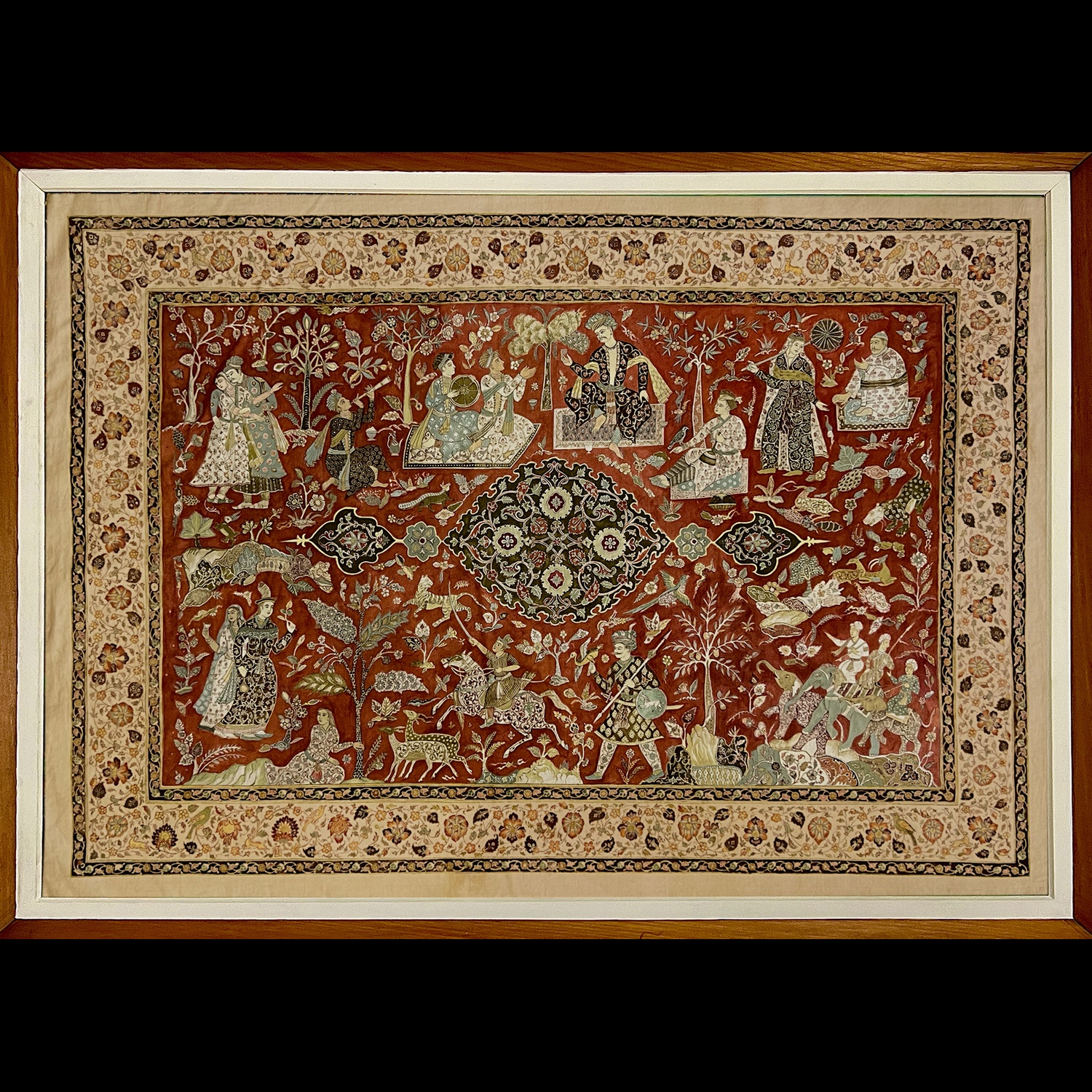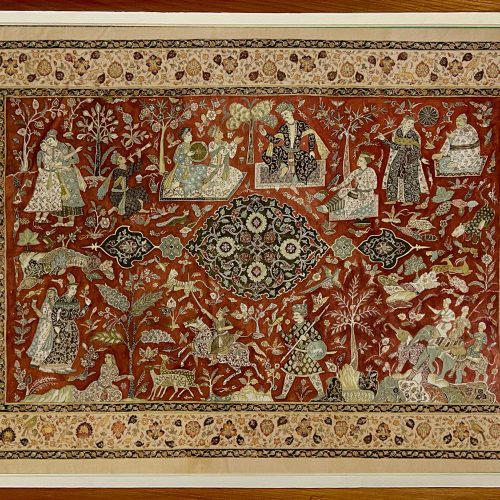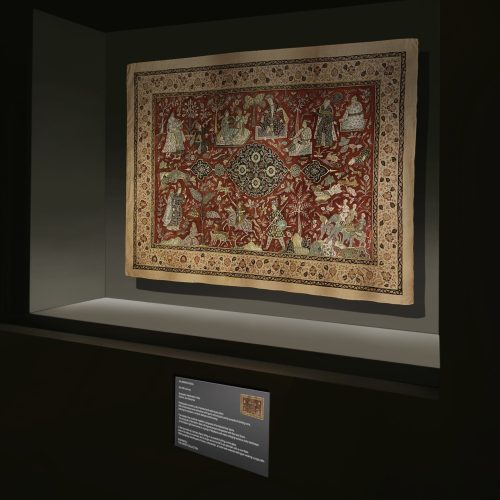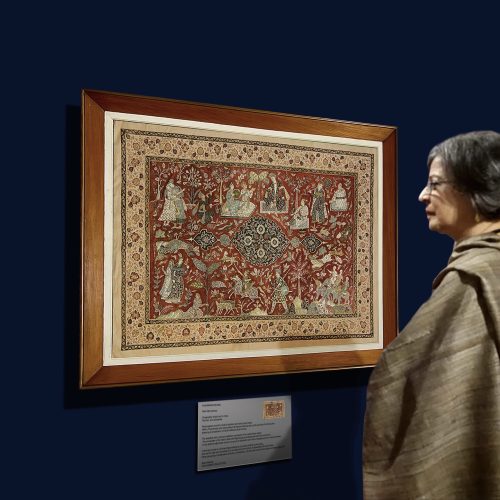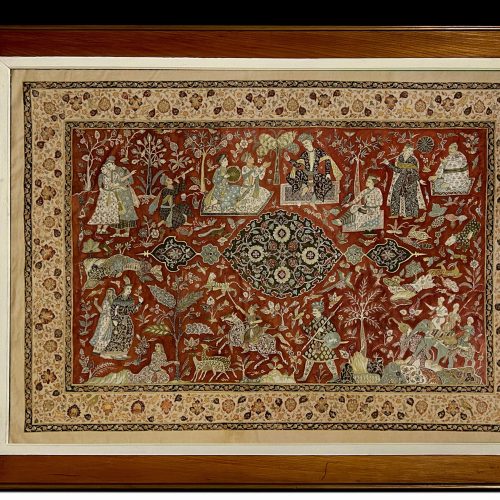PERIOD: | Mid-16th Century |
|---|
ORIGIN: | Attributed to India, Deccan, Golconda. |
|---|
DIMENSIONS: | Length:89.5 Width:62 Cm |
|---|
Description: | Of rectangular coverlet (Rural) of painted and resist-dyed cotton. With a floral border and cartouches with figures showing the courtly pursuits of drinking wine, listening to musicians, romantic dalliance and hunting.The field has a central medallion composed of formalised floral stems. The remainder of the field is filled with figural groups interspersed with flora and fauna. In the bottom right-hand corner is a group of elephants with riders charging across a rocky landscape. In the top centre is a princely figure sitting on a coverlet holding a wine glass, and on his right are musicians and a singer and on his left is an attendant with a wine flask. Other groupings include pairs of lovers, a horseman, a hunter and a dervish-like figure wearing a yoga patio.The Rumal (coverlet), cotton mordant- and resist-dyed (kalamkari/chintz), Coromandel Coast, prominently said to have been made for the Golconda court textiles. |
|---|
Footnote: | Golconda is a fortified citadel and ruined city located on the western outskirts of Hyderabad, Telangana, India.The fort was originally built by Kakatiya ruler Pratāparudra in the 11th century out of mud walls, It was ceded to the Bahmani Kings from Musunuri Nayakas during the reign of the Bahmani Sultan Mohammed Shah I, during the first Bahmani-Vijayanagar War. Following the death of Sultan Mahmood Shah, the Sultanate disintegrated and Sultan Quli, who had been appointed as the Governor of Hyderabad by the Bahmani Kings, fortified the city and made it the capital of the Golconda Sultanate. Because of the vicinity of diamond mines, especially Kollur Mine, Golconda flourished as a trade centre of large diamonds known as Golconda Diamonds. Golconda Fort is currently abandoned and in ruins. The complex was put by UNESCO on its “tentative list” to become a World Heritage Site in 2014, with others in the region, under the name Monuments and Forts of the Deccan Sultanate (despite there being several different sultanates. |
|---|
Condition report: | Invariant with age, some extents of fabric and scratches to the veneer, and insignificant wrinkles round the edges throughout as viewed. |
|---|
PROVENANCE: | Private European Collections. |
|---|
CERTIFICATE: | | | Comes with a certificate from the Art Loss Register |
|---|
|
|---|




